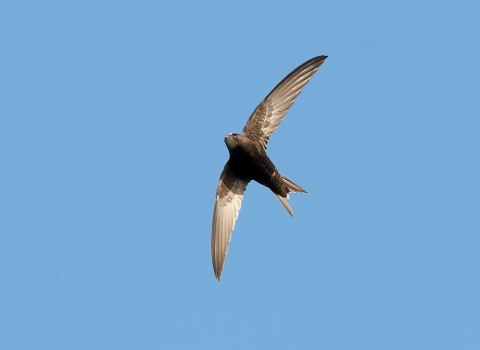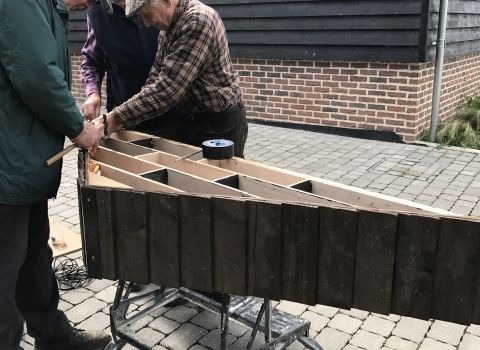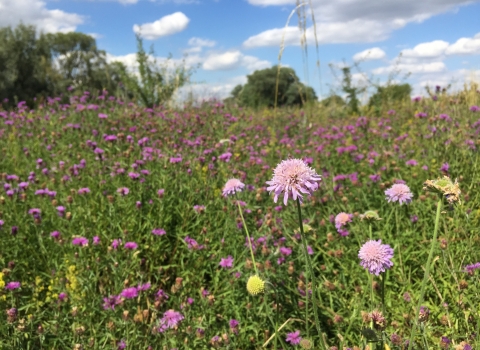As with many species, swifts are declining - their population halving every 20 years; these wonderful aerial acrobats return each year, arriving in May having travelled all the way from over wintering grounds in Africa. They often nest in houses, returning to the same place each year - the nests aren't always easy to spot as they use spaces under tiles or eaves and don't leave a mess below their nest.
To celebrate the bird and highlight their decline, the UK's first Swift Awareness Week (the first country in the world to dedicate a national week in support of swifts) hopes to bring a focus to their plight, and provide information on how to help them. Trumpington Meadows' Something in the Air event on Tuesday 19 June marked the installation of a 9-nest swift box on the side of the office building, installed by Dick Newell of Action for Swifts - and local animal rehabilitator, Deborah Lauterpacht, brought along a recently recovered swift to release.









